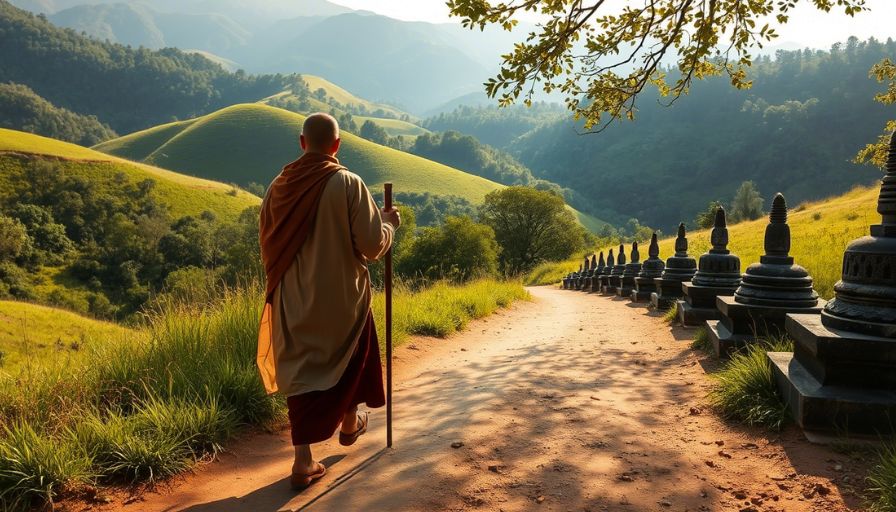India is the spiritual birthplace of Buddhism, the land where Siddhartha Gautama—later known as the Buddha—lived, attained enlightenment, preached his teachings, and eventually entered Mahaparinirvana. For followers of Buddhism and spiritual travelers alike, exploring the sacred sites associated with the Buddha’s life is a profound journey of introspection and inspiration. These historical landmarks, still vibrant with devotion, are among the most popular Buddhist destinations in India, drawing pilgrims from across the world.
From the quiet forests where the Buddha meditated to the great cities where he delivered sermons, this sacred trail is not just a tour—it is a transformative pilgrimage through time, culture, and spirit.
The Four Major Pilgrimage Sites
There are four sites that are considered most sacred in Buddhism, all located in India and associated with key events in the Buddha’s life. They form the core of most popular Buddhist destinations in India and are often visited as part of a structured pilgrimage known as the Buddhist Circuit.
1. Lumbini (Birthplace of the Buddha) (Now in Nepal but closely tied to Indian Buddhist routes)
While technically in present-day Nepal, Lumbini is often included in Indian Buddhist itineraries due to its close proximity to the Indo-Nepal border. It is the site where Queen Maya Devi gave birth to Siddhartha Gautama in 563 BCE. The Maya Devi Temple, ancient ruins, and a sacred pond mark this spiritually charged location.
Travelers visiting Indian sites such as Sarnath or Kushinagar often add Lumbini to their pilgrimage, making it a cornerstone of the popular Buddhist destinations in India itinerary.
2. Bodh Gaya (Enlightenment)
Arguably the most sacred Buddhist site in the world, Bodh Gaya in Bihar is where Siddhartha attained enlightenment under the Bodhi tree and became the Buddha. The Mahabodhi Temple complex, a UNESCO World Heritage Site, stands at the very spot of this profound event.
Modern Bodh Gaya is a thriving spiritual center, home to monasteries built by Buddhist communities from countries such as Japan, Thailand, Bhutan, and Tibet. Pilgrims and tourists gather here to meditate under the Bodhi tree, walk the path of reflection, and experience the teachings of mindfulness and liberation.
3. Sarnath (First Sermon)
Located near Varanasi in Uttar Pradesh, Sarnath is where the Buddha delivered his first sermon after enlightenment, setting in motion the Wheel of Dharma. Known as the Dharmachakra Pravartana, this sermon laid the foundation for the Four Noble Truths and the Eightfold Path.
Today, Sarnath is home to the Dhamek Stupa, believed to mark the exact spot of the first sermon. The site also features the ruins of ancient monasteries, the Ashokan Pillar with the famous lion capital (now India’s national emblem), and the Sarnath Archaeological Museum. It is one of the most popular Buddhist destinations in India due to its immense historical and spiritual value.
4. Kushinagar (Mahaparinirvana)
Kushinagar, in eastern Uttar Pradesh, is where the Buddha passed into Mahaparinirvana at the age of 80. The Mahaparinirvana Temple, housing a serene reclining Buddha statue, is a focal point for pilgrims paying their final respects to the Enlightened One.
The peaceful environment of Kushinagar, surrounded by lush fields and quiet villages, offers a space for deep contemplation and gratitude. It completes the cycle of life events in the Buddha’s journey, making it an essential stop for those walking in his footsteps.
Additional Sacred Sites
Beyond the four main pilgrimage sites, several other locations play important roles in the Buddha’s life and the spread of Buddhism. These also rank among the popular Buddhist destinations in India, especially for those wishing to explore the broader context of Buddhist heritage.
5. Rajgir and Nalanda (Teaching and Monastic Life)
Rajgir, in Bihar, was one of the Buddha’s favorite retreats. It was here that he spent many rainy seasons and delivered key teachings. Gridhakuta Hill (Vulture’s Peak) is a significant spot where he gave sermons to large gatherings.
Nearby, the ruins of Nalanda University, once a world-renowned center of Buddhist learning, offer a glimpse into the intellectual and spiritual richness of ancient Buddhism. Nalanda was a melting pot of scholars from China, Tibet, Korea, and Southeast Asia. It remains one of the popular Buddhist destinations in India for those interested in Buddhist education and philosophy.
6. Shravasti (Miracles and Teachings)
Shravasti, in Uttar Pradesh, is believed to be the place where the Buddha performed several miracles and spent a significant amount of time teaching his disciples. The Jetavana Monastery here is one of the earliest monasteries built for the Buddha and served as a major center of his activities.
The site includes several stupas and meditation areas, making it a peaceful destination for reflection and learning.
Why These Sites Matter Today
The popular Buddhist destinations in India are not just relics of the past—they are living symbols of a timeless philosophy rooted in compassion, mindfulness, and liberation from suffering. Visiting these places:
- Deepens understanding of the Buddha’s life and teachings.
- Provides a personal space for spiritual growth and inner transformation.
- Connects travelers to a global community of practitioners and pilgrims.
- Supports preservation of important historical and cultural sites.
Whether you’re a practicing Buddhist or a curious traveler, walking in the footsteps of the Buddha can offer insights that extend far beyond the journey itself.
Final Thoughts
India offers a rare opportunity to trace the actual path of the Buddha’s life. From his birth and enlightenment to his teachings and final departure, the country is dotted with sacred sites that continue to inspire millions. These popular Buddhist destinations in India are more than historical landmarks—they are gateways to a more mindful, compassionate, and meaningful way of living.
As you walk these ancient paths, you don’t just follow the Buddha’s footsteps—you walk alongside the timeless wisdom that continues to guide seekers across the world.
